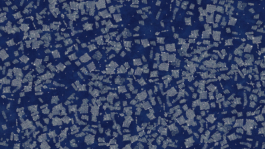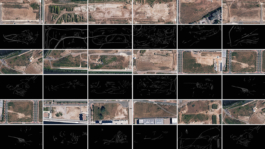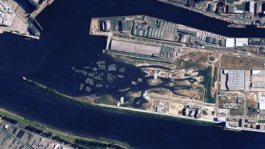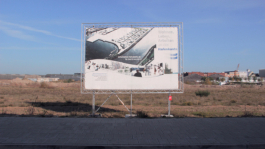
Hafenkante, digital prints on photographic paper.

Hafenkante, digital prints on photographic paper.

Hafenkante, digital prints on photographic paper.

Hafenkante, digital photograph.
Hafenkante, 2014
Digital prints on photographic paper, various dimensions
Computer vision algorithm, digital photograph
On the northwestern edge of Überseestadt, construction sites are springing up along the river. Between the towering buildings of a new commercial utopia, traces of past human activity can still be found in the vast spaces. In contrast to the rectilinear and square occupation of the site, smooth and organic lines of movement from past strips show an alternative pattern to the terrain. What if this movement were repeated so often that the ground itself eroded? In a future where the action of construction tractors is so intense and repetitive, new landscapes might emerge between the smoothness of the water and the remaining commercial debris. How would we occupy a land that doesn’t stop disappearing?
Hafenkante speculates on a future in which society finds its habitat not on stable top-down economic foundations, but in unstable bottom-up socio-economic structures that move flexibly across the surface of the water. The project questions the smooth tractor lines of construction sites seen in satellite imagery. Using a custom computer vision algorithm and various design techniques to accelerate the process of the above narrative, the present photos and sketches were created to visualize the future scenario of such a place.
Developed as part of the MA program in Digital Media at the HfK Bremen, supervised by Willy Sengewald and Nele Brönner. Winner of the Digitale Medien Preis, HfK Bremen, 2015.
Every abyss is a poem yet unfinished
That which stays
Becoming tropical
© 2012 - 2025